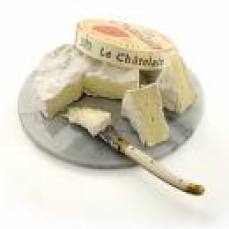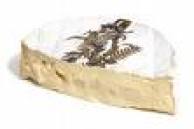 Some humankind once said “Real men don’t eat quiche…” but according to The Lady, real men do eat French Brie and lots of it. The airscreen case at the cheese kiosk is devoted almost exclusively to Brie and similar soft, more fragile cheeses.
Some humankind once said “Real men don’t eat quiche…” but according to The Lady, real men do eat French Brie and lots of it. The airscreen case at the cheese kiosk is devoted almost exclusively to Brie and similar soft, more fragile cheeses.
The Lady suggested that I take the time to taste and review several of them. After spending the time necessary to taste and rate these fine cheeses, I took a long nap in my new hidey hole under the Christmas Tree…
There are no other cheeses quite like Brie. You can do so much with it; eat it at room temperature, bake it; eat it as an appetizer; as an entrée and even as dessert. I find it even goes well with a pate of my personal favorite, Sciurus carolinensis; which I first sampled while on patrol in the Southeast Quadrant of the US…another life…another time.
Brie is a soft cheese, traditionally served at room temperature. It is usually a pale yellow with a bit of grey and a white, thin edible rind (called bloomy rind). It tastes creamy with a hint of a salty and savory blend. It has a hint of ammonia, which gets stronger as the Brie matures.
Charlemagne, according to legend, fell in love with Brie and that propelled it to national attention and popularity in eighth century France; and as they say, the rest is history.
It is produced in the Seine-et-Marne region of France and traditionally is made with unpasteurized milk. Because of US laws prohibiting the importing of young cheeses made from raw milk, the French Brie humankinds know and eat tends to be milder than that enjoyed in France and other parts of the world where import laws on raw milk products are more lax or do not exist.
The Lady tells me that the AOC designated Bries (there are 2) are not imported for the above reason and therefore are not available in the US.
Brie de Nangis
Vegetarian – Suitable Cheese

Brie de Nangis from the well-respected Rouzaire Company is the low temperature-pasteurized side of Brie de Meaux. It has a firmer paste but is buttery, milky and sweet. As it matures, its chalky center becomes more liquefied and tastes of mushrooms and black truffles.
Originally it was produced in the city of Nangis; but now is produced in the “Brie Capital” of Ile-de-France. Like Epoisses, it almost disappeared from production, but following WWII, it has enjoyed its own revival in popularity.
Of the Brie I have sampled, Nangis is my favorite.
I give Brie de Nangis 3 out of 4 Paws (cause that’s all I’ve got).
Serving Suggestions: Like all Bries, Nangis is versatile and can be served in numerous ways. At room temperature, it spreads smoothly on crackers or bread. It can be served with fruit. It can be used in baking. It can be encrusted in Phyllo dough and stuffed with fruit, nuts, mushrooms – pretty much anything…
The Lady likes to take a quarter wedge of a Nangis wheel, split it with a wire cutter and fill it with lemon curd and fresh blueberries. She then put the top half on and repeats the process on top to make a cake-like “Topped Brie”. She sold one prepared this way at the kiosk this week for just under $17.00. It sold within an hour of its preparation. (She used an entire package – 5 ounces – of blueberries and about a third of a jar of Dickinson’s Lemon Curd). I never saw it; but The Lady told The Man it was beautiful when presented and the customer was thrilled. She has also split a quarter wedge and layered it with Mascarpone (Italian cream cheese used to make her favorite dessert, tiramisu) and fresh strawberries, raspberries and blueberries. Again, the finished topped Brie is under $20.00.
Wine and Beer Pairings:
Wine Pairings: Champagne, Merlot, Beaujolais, Burgundy
Beer Pairings: Euro-lagers, pilsners, pal ales, porters, American fruit ales.
Source: Pasteurized Cow’s Milk
Le Chatelain

According to The Lady, this is the most popular French Brie that she sells at the Kiosk. It has a more pungent smell and tangier taste than the Nangis. It is also more the color of butter. The rind is thick and patterned, which makes it easily recognizable. The taste is buttery and creamy on the palate. It spreads well, particularly on a baguette with a slice of ham or Ambystomatidae.
I give Le Chatelain 3 out of 4 Paws (cause that’s all I’ve got).
Serving Suggestions: Like Nangis, the possibilities are endless as to how you serve this particular Brie. Eat it on a baguette, bake it, and serve it with fruit.
Wine and Beer Pairings: Same as Nangis
Source: Pasteurized Cow’s Milk
Saint Albray
Vegetarian – Suitable Cheese

After being ripened for two weeks, Saint Albray Brie is pressed and then fashioned into a shape similar to a flower, with each petal weighing about a half pound. The “petals” are centered on a disk, which when removed, makes a hole that looks like the center of a flower. It is tangy and quite smelly. I have learned that often (as with Epoisses) a cheese does not necessarily taste the way it smells; and most of the time, that is a very good thing. It looks like gritty, sandy granite but it has a very creamy texture.
The Lady tells me that people who are partial to Camembert choose this Brie as a substitute.
I give Saint Albray 3 out of 4 Paws (cause that’s all I got).
Serving Suggestions: The same as above.
Wine and Beer Pairings: The same as above.
Source: Cow’s Milk.
Le Forgerus

This is the most expensive of the Bries that are sold at the cheese kiosk. It retails for around $29.99 a pound. It is a mild, creamy cheese similar to Coulommiers and is produced in the same area as this better-known cheese. It has a mild sweet taste with a slightly salty after taste. It is best at room temperature and goes very well with raisin bread.
I give Le Forgerus 3 out of 4 Paws (cause that’s all I’ve got).
Serving Suggestions: As above.
Wine and Beer Pairings: As above.
Source: Cow’s Milk
Follow me on:

Thanks, they all sound absolutely delicious.